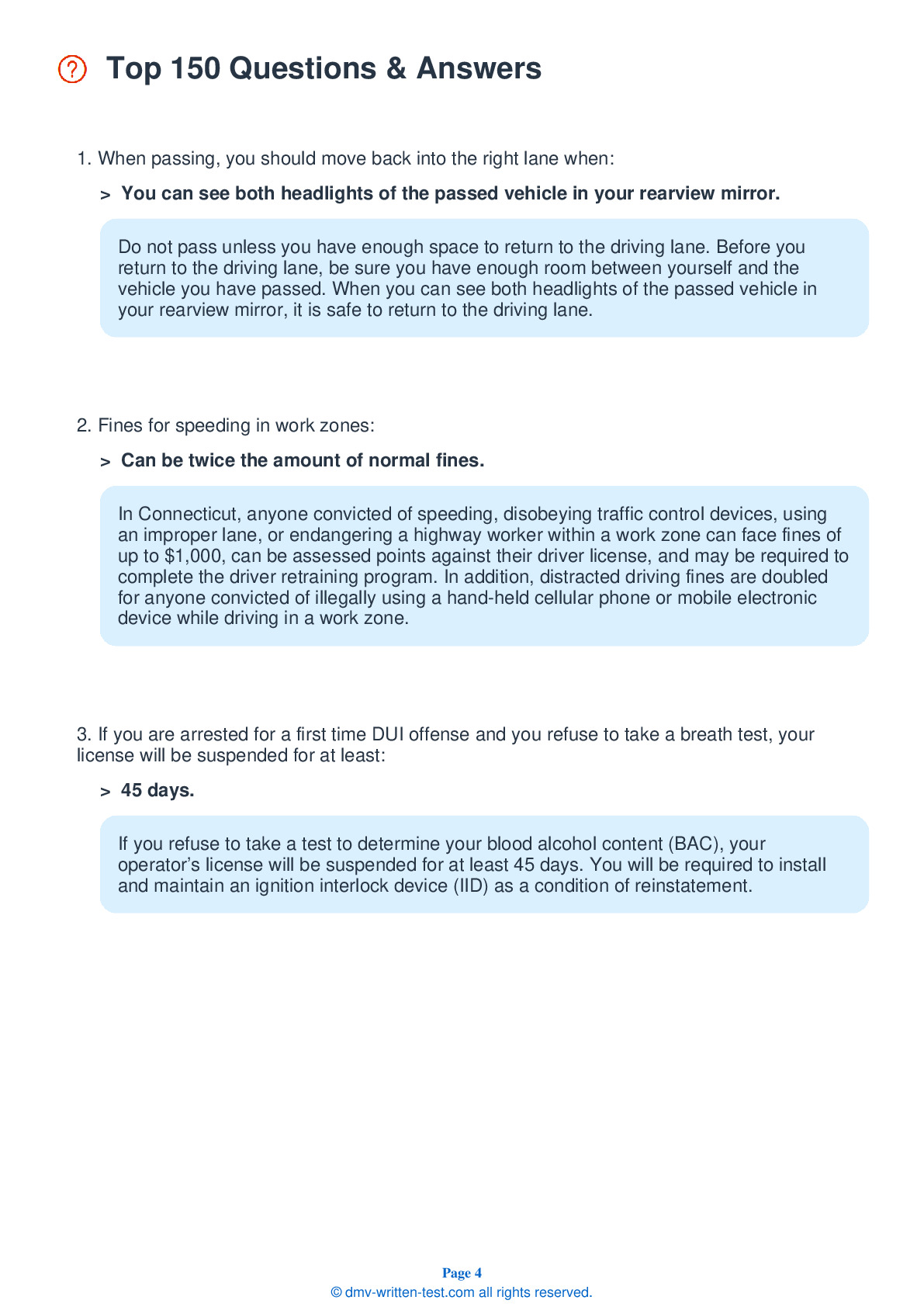2025 Connecticut Permit Test 6
The following questions are from real DMV written tests. These are some of the actual permit questions you will face in Connecticut. Each permit practice test question has three answer choices. Select one answer for each question and select "grade this section." You can find this button at the bottom of the drivers license quiz. For a complete list of questions and answers for Connecticut please visit https://cheat-sheets.dmv-written-test.com/en/connecticut/car.
Number of Tests
Number of Question
Passing Score
17. If you drive too fast on a wet road, there is a danger that:
Explanation
When the road is wet, most tires have good traction when being driven at speeds of up to about 35 mph. As you drive faster, your tires may start to ride up on the water like water skis. This is called "hydroplaning.”
18. When a school bus is picking up or dropping off children, you must:
Explanation
When approaching a school bus that is picking up or dropping off passengers, you must come to a complete stop before reaching the bus, regardless of your direction of travel.
19. Stopping distances and severity of crashes:
Explanation
Stopping distances are longer and crashes are more severe when traffic travels at higher speeds.
20. Roads with double solid yellow line markings down the center indicate that passing is:
Explanation
A double solid yellow line down the center of a road indicates that traffic is moving in opposite directions and that passing is not allowed from either direction.
21. When passing a row of parked vehicles, you should:
Explanation
Keep a space between your vehicle and parked vehicles. A person may step out of a parked vehicle or out from between the parked vehicles without looking. A driver may begin moving their vehicle before realizing you are there.
22. Which of the following is most likely to be slippery in cold weather after snow or rain?
Explanation
On cold, wet days, shaded spots on a roadway can become icy. Shaded areas often freeze before, and thaw out after, the rest of a road.
23. At intersections, crosswalks, and railroad crossings, you should always:
Explanation
Any time you come to a place where people may cross or enter your path, or where one line of traffic meets another, you should look to the left and right sides of your vehicle to make sure no one is coming.
24. When entering an interstate highway, you should:
Explanation
Rather than stopping (as you would when entering other roads), you must use the merging or acceleration lane to speed up and smoothly merge with fast-moving traffic already on the interstate.
25. Continuous hard braking on ice and snow often:
Explanation




